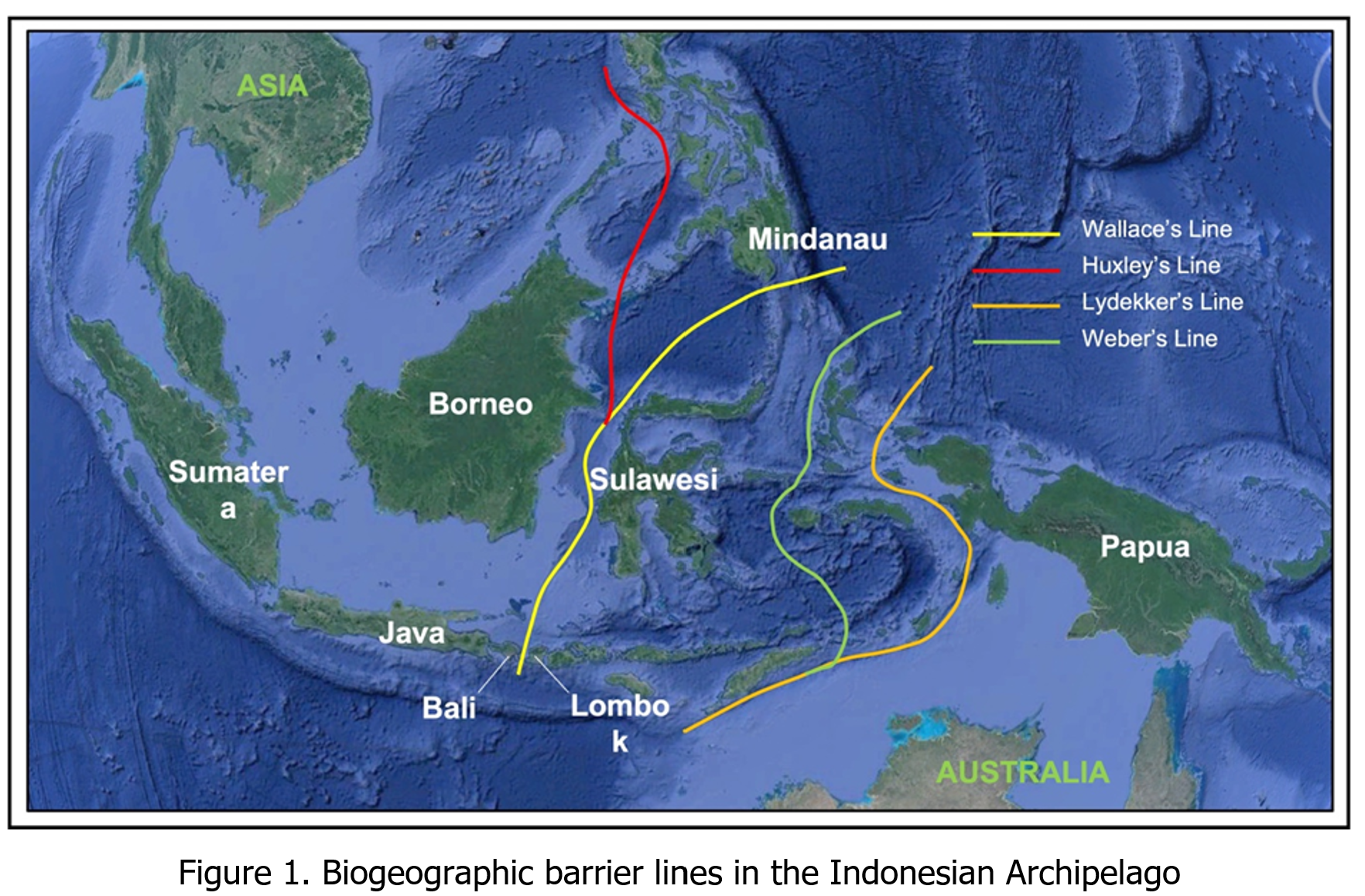The value of the Wallacea Region: Considerations behind the changing scope of JPK Wallacea

Downloads
The Editorial Board has issued this editorial note in the form of a review to inform contributors about changes to the scope of the Journal of Wallacea Forestry Research (JPK Wallacea) following the transfer of management from Balai Penerapan Instrumen Lingkungan Hidup dan Kehutanan Makassar to Hasanuddin University's Forest Conservation Study Program in 2023. JPK Wallacea is no longer limiting its scope to forestry and is expanded to cover biodiversity in general by incorporating the term Wallaceae, which is a biogeographical area located between the continents of Asia and Australia. This area is well known for its unique biodiversity both on land and in water. The Wallacea region's biodiversity is famed for its distinctiveness yet, it is on the verge of extinction. Thus, the Editorial Board chose to focus on the scope of JPK Wallacea on scientific, technological, and policy conservation features. This scientific publication is expected to make a substantial contribution to the biodiversity conservation effort in the Wallacea region and its surroundings.
Ali, J.R., & Heaney, L.R. (2021). Wallace's line, Wallacea, and associated divides and areas: history of a tortuous tangle of ideas and labels. Biological Reviews, 96(3), 922-942. https://doi.org/10.1111/brv.12683.
Atkins, H., Preston, J., & Cronk, Q. C. (2001). A molecular test of Huxley's line: Cyrtandra (Gesneriaceae) in Borneo and the Philippines. Biological Journal of the Linnean Society, 72(1), 143-159. https://doi.org/10.1111/j.1095-8312.2001.tb01306.x.
Beron, P. (2015). The arachnogeography and the “lines” (of Wallace, Lydekker, Weber). Historia naturalis bulgarica, 22(3), 5-30. https://www.nmnhs.com/historia-naturalis-bulgarica/pdfs/hnb-2015-22.pdf.
Chisholm, H, ed. (1922). Lydekker, Richard. Encyclopedia Britannica Vol 31 (12th ed. 6 July 2019). London & New York: The Encyclopedia Britannica Company.
Conservation International, (2011). Wallacea Ecosystem Profile Summary. Critical Ecosystem Partnership Fund.
Conservation International, (2014). Ecosystem Profile Summary: Wallacea Biodiversity Hotspot. Critical Ecosystem Partnership Fund.
De Bruyn, M., Wilson, J. A., & Mather, P. B. (2004). Huxley’s line demarcates extensive genetic divergence between eastern and western forms of the giant freshwater prawn, Macrobrachium rosenbergii. Molecular phylogenetics and evolution, 30(1), 251-257. https://doi.org/10.1016/S1055-7903(03)00176-3.
Fisher, M. R., Verheijen, B., & Sahide, M. A. K. (2020). Community and conservation in Wallacea: Making the case for the region, a methodological framework, and research trends. Forest and Society, 4(1), 1-19. http://dx.doi.org/10.24259/fs.v4i1.9569
Fitzpatrick, B.M., Fordyce, J.A., & Gavrilets, S. (2009). Pattern, process and geographic modes of speciation. Journal of Evolutionary Biology, 22(11), 2343-2347. https://doi.org/10.1111/j.1420-9101.2009.01833.x
Henderson, A., & Pitopang, R. (2018). Short Communication: The Rattans (Arecaceae) of Wallacea. Biodiversitas, 19(1), 18-21. https://doi.org/10.13057/biodiv/d190103.
Hortal, J., Diniz-Filho, J.A.F., Low, M.E.Y., Alycia, L., Stigall, A.l., & Yeo, D.C.J. (2023). Editorial: Alfred Russel Wallace’s legacy: an interdisciplinary conception
of evolution in space and time. Biodiversity 2(1), 3. https://doi.org/10.1038/s44185-023-00010-w
Michaux, B. (2010). Biogeology of Wallacea: Geotectonic models, areas of endemism, and natural biogeographical units. Biological Journal of the Linnean Society, 101(1), 193–212. https://doi.org/10.1111/j.1095-8312.2010.01473.x.
Ngakan, P.O., Komarudin, H., Achmad, A., Wahyudi, & Tako, A. (2006). Community dependency, perception, and participation on forest biological resources (in Indonesia). Center for International Forestry Research. Bogor Indonesia. Available online at https://www.cifor.org/publications/pdf_files/Books/BNgakan0601.pdf.
Ngakan, P.O. (2014). The importance of Biodiversity in the tropical ecosystem. In: Towards Sustainable Tropical Ecosystem Management for Green Economic Development (Hamonis and Jufriah Eds.). Research Center for Tropical Ecosystem and Sustainable Development Mulawarman Univesity, Samarinda

